STUDENTS PROJECTS
PROJECTS2013
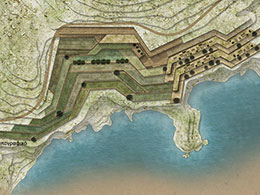
21 June, 2015
A standard integrated unit based on the cultivation of medicinal and aromatic plants
This diploma project proposes a new standard of living, outside the urban design, based on the primary sector and exploitation of the Greek land.
Students: Antigoni Ioannou, Vicky Charalampopoulou
Supervisor: Panos Dragonas
University of Patras, Department of Architecture
Presentation Date: 31 October 2014
In particular we are referring to the coastal region of Erimoupolis located in Crete, at the east of Sitia. It's characterized by three consecutive bays forming as many beaches. It's a landscape of great natural beauty where human presence is imperceptible. The built environment is absent, while the few cultivated areas, which suggests that the landscape has remained completely untouched by man. The morphology of the landscape is characterized by the rocky, sloping land that spot becomes very steep and rough, while the vegetation is low and sparse.
The region's economy is primarily based on agricultural production. In tourism development contributes the archaeological site of Itanos and the beaches of Erimoupolis, particularly the northern which is the largest, mainly during the summer months.
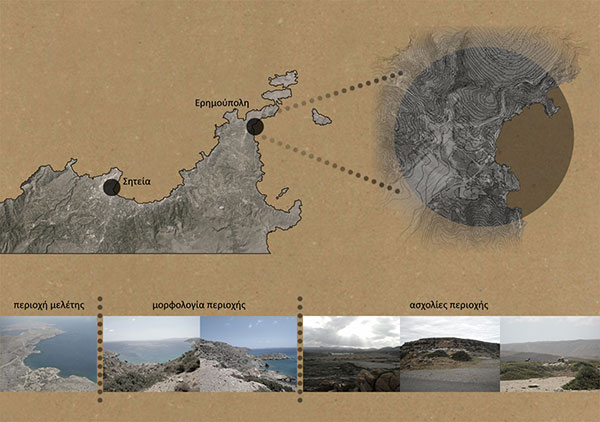
The site is located northeast of the greater bay. The topography and more specifically the existence of rocky formations were the limits of intervention, and played an active role in the placement of the infrastructure.
The specific morphological, the climatic conditions and the location of the area by the sea are favorable factors for the cultivation of medicinal and aromatic plants. Therefore, this proposal aims to create a standard, integrated unit based on the cultivation, processing of these plants. The major advantage of this is that the material is left unused or altered but passed to different markets.
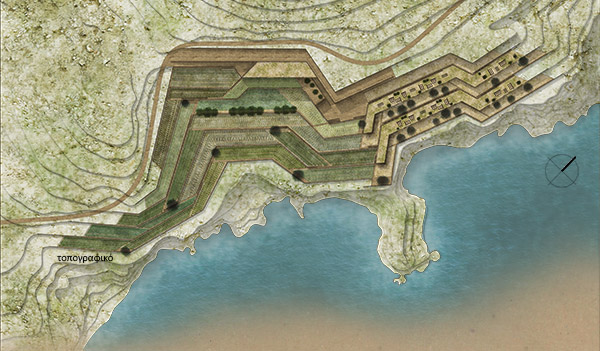
As contemporary factories are not only industrial sites, but they can be seen as an alternate visitor attraction, top priority was to design an industrial building that meets all the necessary requirements for the proper function and yet can be visited by the public. This contributes to the financial support of the people and the development of alternative tourism in the area. Moreover, one basic goal was the minimum use of machinery in order to reduce the energy footprint of the plant and to minimize maintenance costs.
The proposal is based on the structural system of 'Xerolithia', a traditional Cretan retaining method, in order to artificially create a sloping landscape which will grow crops and will be limits on the organization of the built environment. The rocky ground contributed to this decision and in making this system the local coarse stone was used.
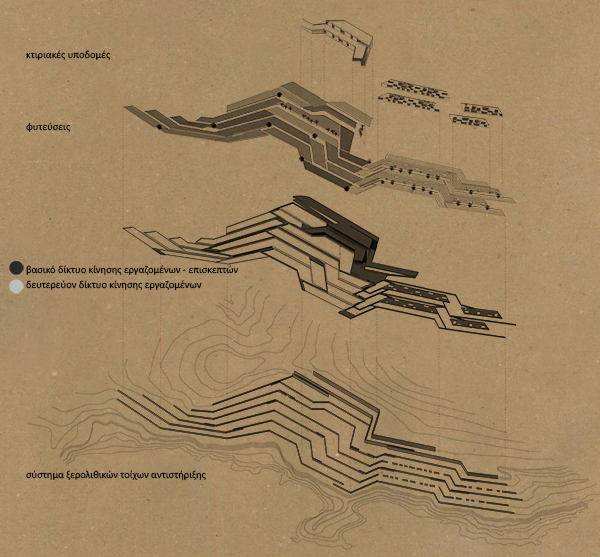
One can enter the facilities by the northwest end of the site. The 16 houses are organized under a single green roof. The proper placement of patios, the south east exposure and the use of metal louvers on 'transparent' ceilings create pleasant living conditions in a warm climate like that of the region.
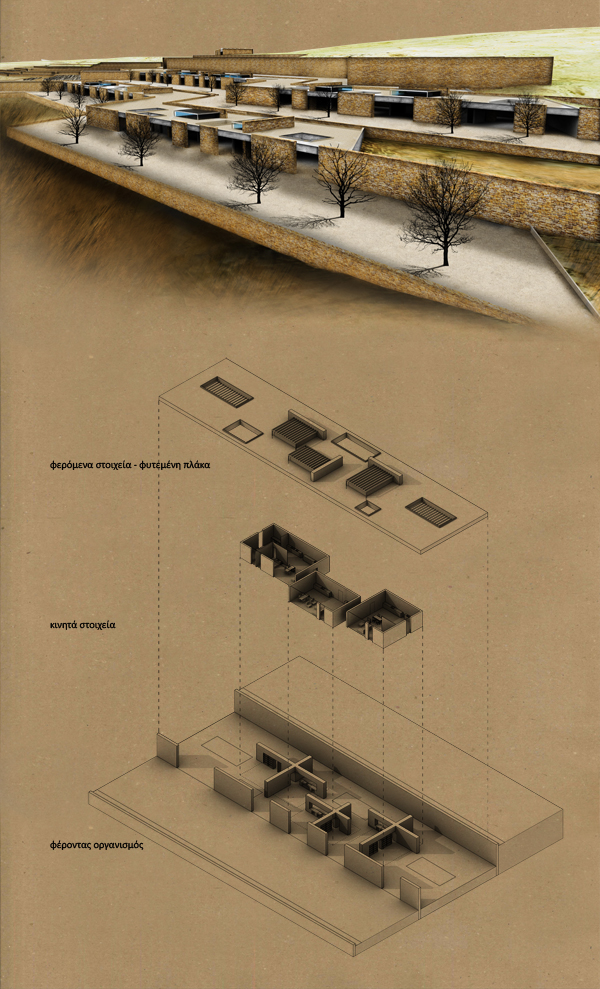
The design of the housing unit is based on two perpendicularly intersected stone elements, as a reference in the traditional idea of the hearth as bearing the basics of unifying the living room with him in the kitchen. The axis oriented from the mountain to the sea separates the living space from the other areas of the house while the other provides the main traffic corridor. The stone walls surrounding the area of housing interrupted forming gaps so the sea view is unobstructed.
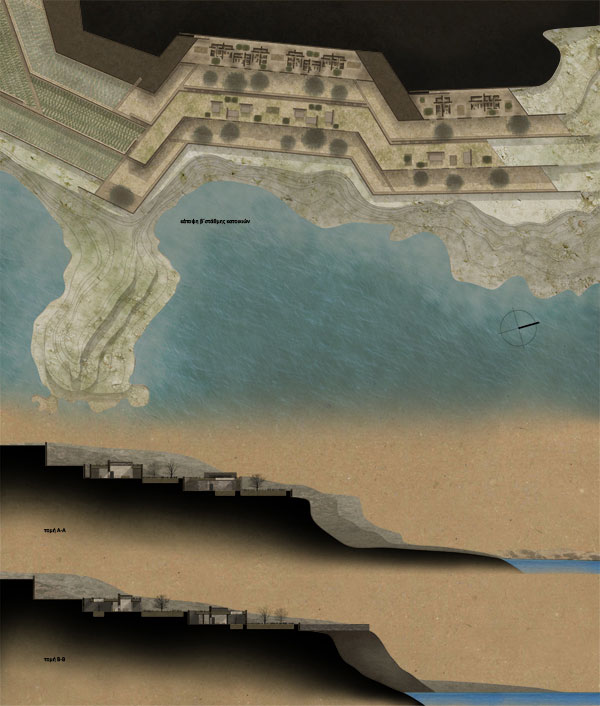
The dual nature of the plant refers to a strictly industrial program and the opportunity it offers to visitors to come in contact with the production process and processing of herbs. The design is based both on resolving the operational parameters of the program and the path-experience experienced by the visitor.
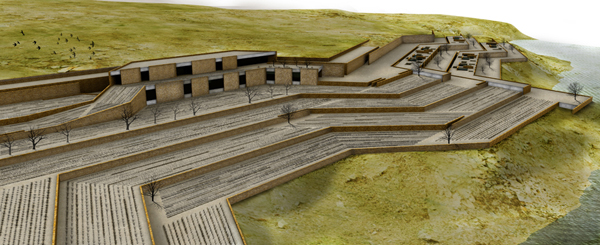
The first space encountered when entering the plant is the information area, and then the visitors begin their tour on the crops. Thus, they come in contact with both the plants and the croplands that are the starting point of the production line.
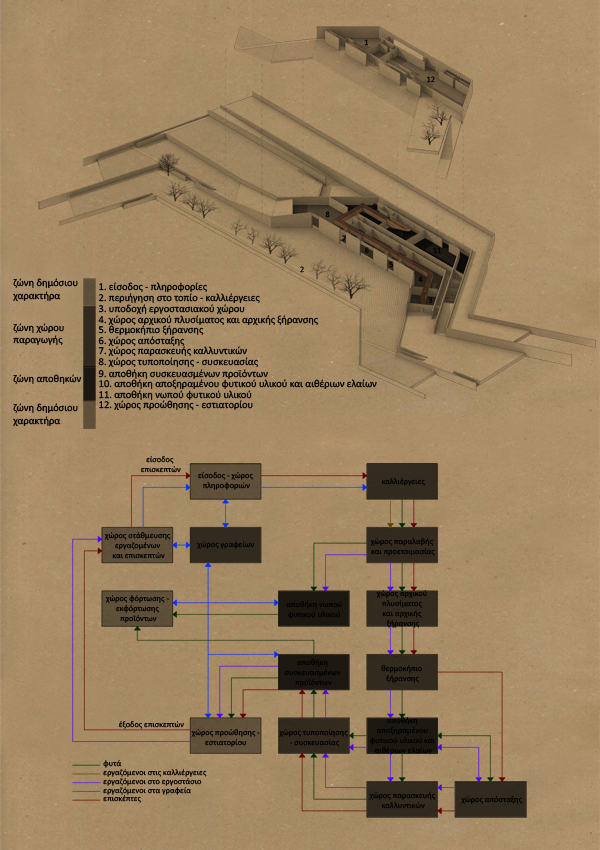
Guests depending on the season and therefore the three stages of culture, sow, care of the developing plant material and harvesting, you will see a different picture in the landscape.
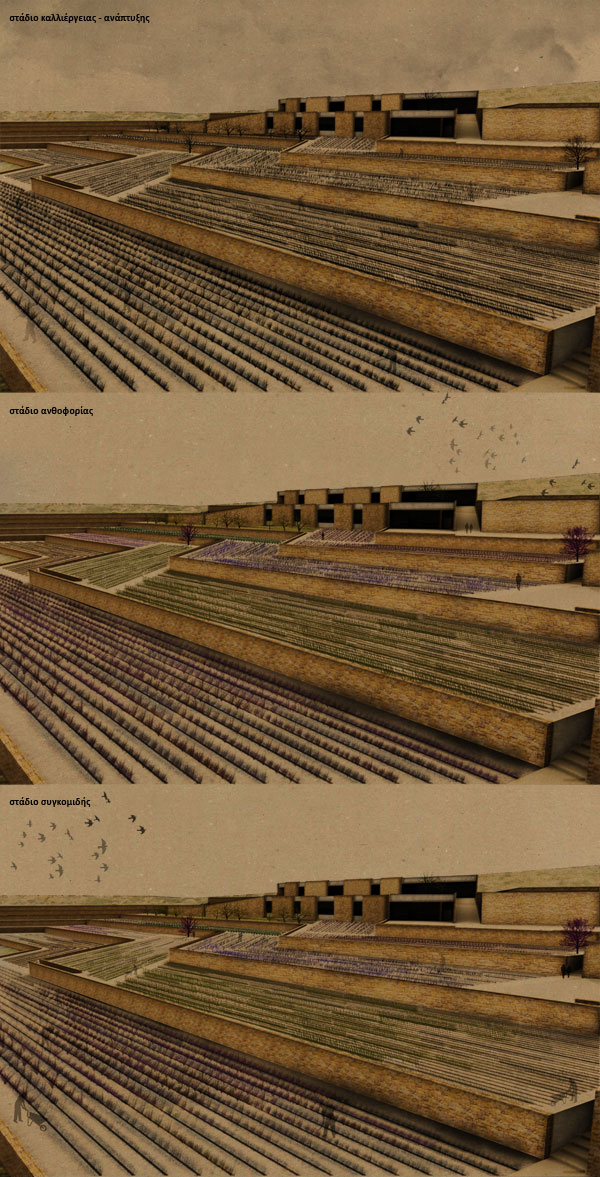
The tour ends in the landscape in the central square. A hub between the factory and housing because conducts all transactions. From there they enter in a space that is hosting the purely industrial project.
In the reception area a hinged metal corridor receives the visitors. This is a path-tour at different stages of the production process, without impeding the movement of workers, as it becomes at a different level. Experiential dark path is an experience for the visitors because the premises of the factory revealed through sensory activation. Putting spaces designed production base-drive product line so that those who are functionally related to each other to close serving optimum movement of the workers.
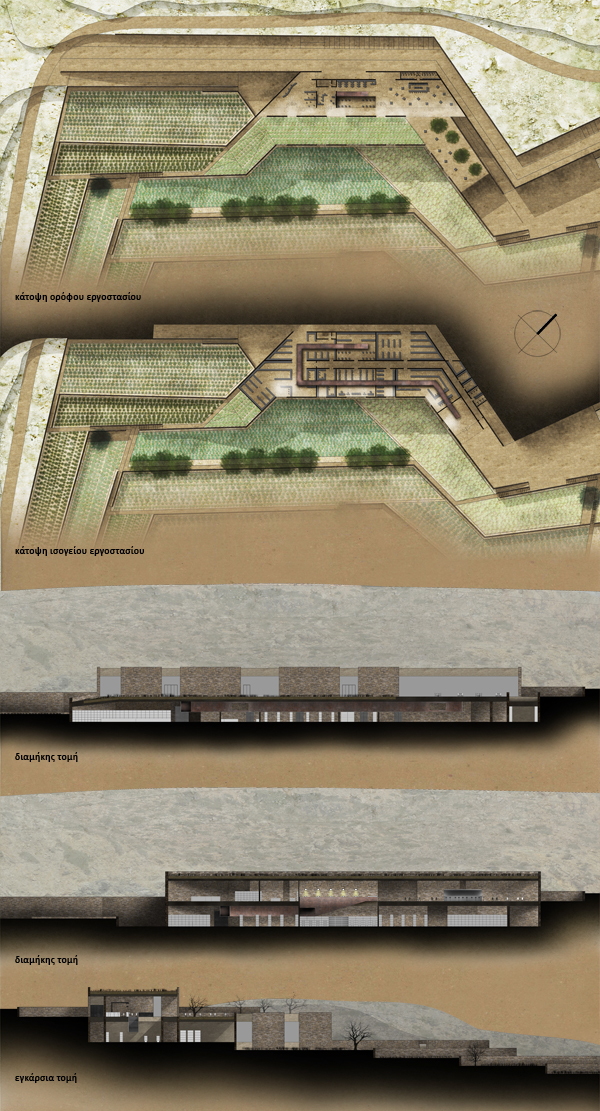
The metal drive way leads through a staircase to the upper level, where promotion of products on board. The intermittent stone wall framing the landscape, causing visitors to leave the outdoor area. The tour concludes in a landscaped esplanade, from where the view unobstructed revealed both artificial farmland and the untouched landscape.











